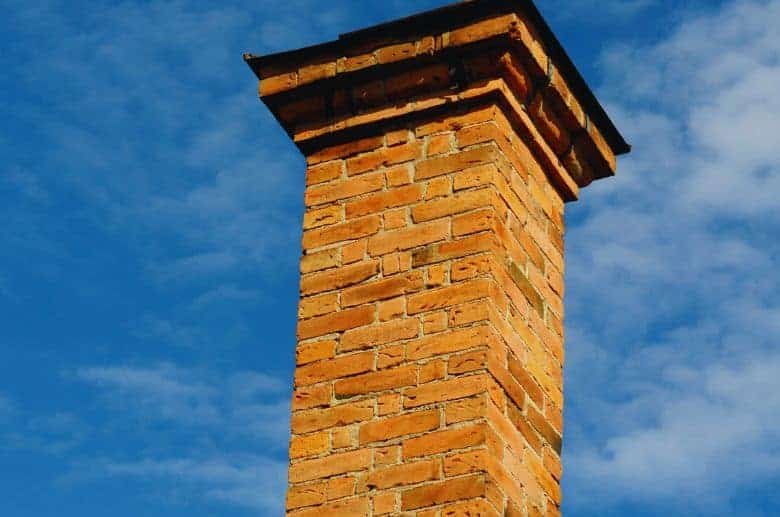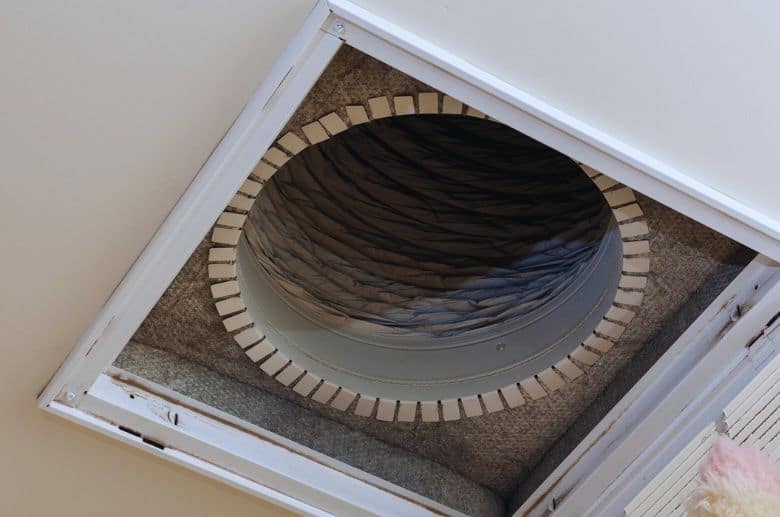Proper ventilation is crucial for safety and efficiency in heating appliances such as fireplaces, wood stoves, and furnaces. Three common terms that often get confused are chimney, flue, and vent. While they may seem interchangeable, they have distinct differences and serve different purposes.
Understanding the differences between these terms is essential for making informed decisions about heating systems and ensuring the safety of your home. In this response, we’ll explore the definitions and differences between chimney vs flue vs vent.
Ready for the analysis? Let’s travel this educational journey together.
What is a Chimney?

A chimney is a vertical structure typically made of bricks or masonry materials and installed on the roof of a building. It’s designed to provide a draft or airflow to remove smoke, gas, and other byproducts of combustion from a heating appliance such as a fireplace, wood stove, or furnace.
The height and diameter of a chimney are carefully calculated to create the correct amount of draft to ensure proper ventilation and prevent the buildup of dangerous gases, such as carbon monoxide, inside the home.
Moreover, this is where the 3-2-10 chimney rule also comes in, a guideline used to determine the minimum clearances that should be maintained between a chimney and any combustible materials.
The rule states that the shortest side of the chimney should be no less than 3 feet above the point where it protrudes through the roof. Secondly, the highest point of the chimney must be at least 2 feet taller than any part of the building within a 10-foot radius.
Additionally, chimneys often have a cap or cover to prevent debris and animals from entering and to protect against weather damage.
Chimneys come in different sizes and shapes. Depending on your house or property, you will find:
- Masonry chimney. This is the conventional chimney type, usually made of bricks, cement, mortar, blocks, or stone. It is characterized by a single tunnel-like pathway that follows the smoke as it escapes. The bricks and stone absorb heat, so the chimney suits winter-prone areas.
- Metal chimney. This type of chimney is made of metal but enclosed or encased by brick and mortar or other materials.
- Prefabricated chimney. Prefabricated chimneys are modern chimneys built in factories before being supplied to homes for placement. They are made of steel and have an aesthetic look than other chimney types. Typically, prefab chimneys are well-suited for residential properties situated on the ground floor of a multi-story building.
A chimney has several parts despite appearing as a single extension above the roof. These parts are:
- Flue liner. This part protects surrounding building materials from damage due to heat.
- Chimney cap. This is the topmost part and acts as a cover, preventing foreign objects from entering the chimney. It also serves as a spark guard from lightning preventing fires from igniting.
- Crown. The crown is the cement part on the chimney’s top, preventing rainwater from entering the chimney.
- Flashing. Chimney flashing is a metal, aluminum, copper, vinyl, or PVC material installed at the point where the chimney intersects with the roof of a building. Its purpose is to prevent water from seeping into the area around the chimney.
- The damper. This is a device that controls the amount of air entering the chimney.
——
Do You Need to Hire Chimney & Fireplace Expert?
Get free quotes from qualified experts near you. No commitment required!
——
What is a Vent?

A vent is an opening or passageway that allows air or gases to circulate freely. Vents are often found in homes as part of the heating and cooling systems or to provide fresh air to living spaces. Unlike chimneys and flues, vents do not necessarily have a vertical orientation and can be located on the walls, ceilings, or floors.
You can also use vents to exhaust fumes or other unwanted odors from kitchens, bathrooms, and other areas of the home. Some heating appliances, such as high-efficiency furnaces or water heaters, may have a direct vent allowing combustion air intake and exhaust to be vented through a single pipe.
A vent differs from chimneys and flues because it can pass through any part of the house. In addition, a vent does not need temperature protection to prevent heat transfer to surrounding building material. A vent can’t handle much heat, so it is mainly used in gas and pellet stoves rather than wood fireplaces.
Vents serve two distinct functions in a home: intake vents and exhaust vents. An intake vent provides a pathway for fresh air to enter the home, while an exhaust vent allows smoke and gas to exit the house. While the names of these vents suggest their purposes, it’s important to note that they are designed to work together to ensure proper ventilation and air circulation inside the home.
Some of the reasons you need adequate ventilation in a home include the following:
- Ensure good airflow and prevent breathing problems
- Insufficient airflow can increase particle buildup, thus increasing fire incidences.
What is a Flue?

A flue is a passageway or duct designed to vent exhaust gases from a heating appliance to the outside of a building. Flues are typically made of metal or ceramic materials and can be found inside chimneys or as standalone components. They can be vertical or horizontal, depending on the heating appliance’s design and the building’s layout.
Like chimneys, flues are carefully sized and configured to create the proper draft and prevent the buildup of dangerous gases inside the home, such as carbon monoxide. Sometimes, a heating appliance may have a flue and a chimney to provide an additional layer of safety and ventilation.
In the modern construction space, many houses have a lined flue. In other words, a flue can be made of brick, stone, metal, or clay with a cylindrical profile that follows the shape of its surrounding chimney structure. It can also be cast iron or steel with decorative elements such as capitals or corbels supporting it at intervals along its length.
Nevertheless, a chimney flue needs maintenance and sometimes replacement as it can decay or damage. Generally, a flue usually ends in an exterior chimney and may include an open hearth.
Flues come in two types: single-wall and double-wall flues.
- A single-wall flue has less insulation and does not effectively protect its surrounding.
- On the other hand, a double-walled flue has a thick layer of insulation, meaning it is better placed to preserve surrounding material.
It is essential to have a properly functioning flue in a chimney system because:
- It protects the chimney material from combustion byproducts, thus leading to a long-lasting chimney
- It helps in the smooth passage of smoke along the chimney
- It prevents the occurrence of chimney fires due to the continual buildup of creosote
——
Do You Need to Hire Chimney & Fireplace Expert?
Get free quotes from qualified experts near you. No commitment required!
——
Chimney vs Flue vs Vent: How Do They Compare?
While the chimney, flue, and vent are related components of a heating and ventilation system, they serve different functions. Chimneys allow combustion gases to exit the home, mainly extending above the roof. It’s usually made of brick or mortar but can also be found in other materials like metal.
Chimney flues are passages that carry the gases from heating appliances and are found lining the chimney. Its primary purpose is to provide an efficient smoke and gas way through the chimney and prevent overheating the chimney material. Otherwise, without it, chimney fires are likely to occur.
On the other hand, vents are openings that provide air circulation and regulate the temperature in the home’s fireplace. But many individuals use these terms interchangeably, even though a chimney, flue, and vent are different. That is why understanding their differences is essential to ensure proper maintenance.
Nowadays, the standard practice is to have your chimney lined with a flue to protect it and minimize fire incidences. Sometimes, the chimney liner is referred to as the flue, but in older homes, most chimneys don’t have this lining. Moreover, most modern chimneys have flues and vents, and this is because moisture issues can occur whether the chimney is in use or not.
The Bottom Line
Now you have a better idea of what chimney vs flue vs vent is all about. The chimney is the exterior part, while the flue is the interior of a chimney or its lining. A vent is an air path within or outside the chimney. However, a flue and vent are both systems within the chimney. In other words, they are parts that make up the chimney system.
They are different in design and purpose. Further understanding the difference between a chimney flue and a vent is crucial when addressing problems. These can include how to repair a cracked chimney flue or seal a chimney flue. But if you want personalized guidance, contact a professional.






